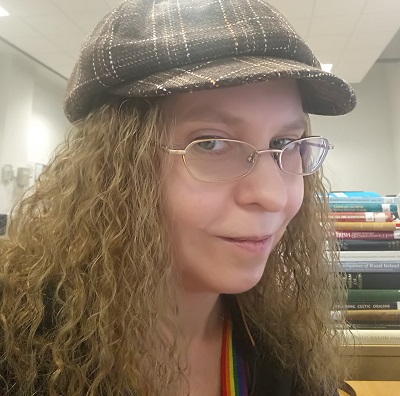BLOG: Open Access road to victory
"We are definitely on the road to embrace Diamond OA, but there is still a lot of work to do. First and foremost, we need to convince ourselves that it's possible to do it on our own turf."

A blog by Dr Judyta Szacillo, Open Research Assistant, Information Services, McClay Library.
Everyone must have heard about Green and Gold Open Access by now. An article published in a traditional, subscription-based journal can be made available via Green Open Access by depositing the accepted manuscript version in an institutional repository (here's ours); or it can be published in Gold Open Access – once you or your funder have paid a hefty fee, the final published version is made publicly available on the journal's website.
Nowadays, more research is published in Open Access than via traditional publishing. We are all becoming rapidly aware of the advantages of Open Access: it gives the research output a wider audience and increases its impact. It makes the results of tax-funded work available to the taxpayer. It enables the academics working in poorer countries to access the research output created in richer countries, thus contributing to a fairer global society… but how much fairer is this really?

Fair data principles, Wikimedia Commons
The cost of Open Access
Publishers resist Green OA – by imposing embargoes and/or other access limitations – because Gold OA has become a great source of income for them. The fee for making a single article available in OA can be as much as £10,000. University libraries in the UK band together to negotiate deals with publishers; these allow for more cost-effective management of Gold OA publishing, but the expenses are still considerable. Institutions in poorer countries are not able to do that to the same extent, and their researchers' access to Gold OA publishing is curbed.
Yes, more Open Access is good, but it is still falling short of achieving true equality.
Diamond to the rescue!
Diamond Open Access, also known as 'Platinum', combines elements of both Green and Gold OA: there are no submission fees for authors and no access fees for readers. The authors can have their article published without paying any article processing charges, and anyone interested in the subject can read the final published version on the journal's website without the obstacle of a paywall. Doesn't that sound perfect?
Of course, there is this one problem: finances. Diamond OA can never be a commercially viable enterprise – yet it is growing. The main driving force for this growth seems to be the sheer frustration of scholars and librarians at the loss of control over the publishing process and its total commercialisation. Diamond OA initiatives are largely scholar-led and/or library-led DIY projects striving for more openness, more equality, and more diversity in academic publishing.
So where is the money coming from to pay for all this? As many Diamond OA initiatives are small and localised, they are funded by the institutions of their origins and operated by staff members based there. Some initiatives grow into larger co-operatives, involving several institutions. There are also a few that have grown into vast international networks like Open Book Publishers or SciPost: these are community-led, non-profit initiatives that rely to a large extent on crowdfunding.

Diagram highlighting the key features of different types of open access in scholarly publishing.
All that glisters is not Diamond
The crowdfunding publishing model has been hijacked by commercial publishers. Platforms like Ubiquity Press or Knowledge Unlatched are often mistaken for Diamond OA publishers. Owned by De Gruyter and Wiley respectively, both are registered as for-profit. A lot of their income originates from institutional membership fees (hence the widespread yet false belief that they represent a crowdfunding model of Diamond OA publishing), but they still charge unassociated authors thousands of pounds of processing fees. So, they may look sparkly, but they're definitely not Diamond!
Diamond OA culture in the UK
‘Scaling small' is what experts advise as the best tool to protect and promote Diamond OA activity. Allow staff the time and resources to oversee local projects, they insist. The resulting strength would be expressed not just in numbers, but also in better ethics and more diversity.
So how are the universities in the UK doing on this front? In December last year, I ran a survey within the Russell Group universities, in which I asked just two questions:
- Are you aware of any local Diamond OA publishing projects or initiatives?
- Does your institution participate in a Diamond OA network or a co-operative?
Fifteen institutions (out of 24) reported having local Diamond OA publishing projects of varied scales of operation. Only one (!) institution is not involved in any Diamond networks.
So we are definitely on the road to embrace Diamond OA, but there is still a lot of work to do. First and foremost, we need to convince ourselves that it's possible to do it on our own turf.
What can we – you, I, the University – do?
The most important factor is us – humans: academics, librarians, students. However, before we initiate a Diamond OA project, we need time to learn the ins and outs of OA publishing. There are certainly some people at Queen's who already know a lot and whose knowledge could be capitalised. There are certainly some more who would like the opportunity to acquire expertise in this area.
There is also a growing community of Diamond OA publishers and activists that offers support online: the Radical Open Access Collective.
The second most important thing is money. Where do we get it from if we take no payments from either authors or readers? Many small initiatives rely on their own institutional funding, but there are other ways to cover the costs of your Diamond project – some of them are listed here.
Last but not least, there is the matter of copyright and publishing licences. This may seem like a quagmire to anyone who ventures into these grounds for the first time, but in fact this is the one thing you wouldn't need to worry much about. The support is already in place.
This is us – the Open Research Team. Please do let us know if you're thinking about running a Diamond OA project!

